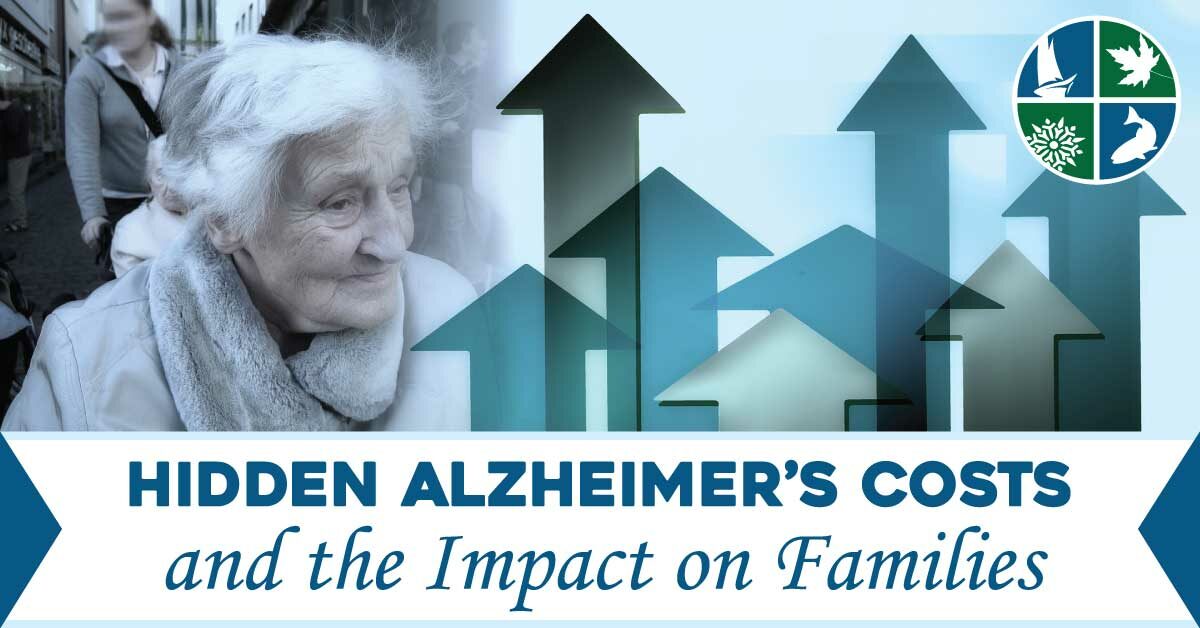When policymakers consider the costs of dementias like Alzheimer’s disease, they consider both direct and indirect costs. Direct Alzheimer’s costs, in this instance, are the medical and social/non-medical care costs related to dementia; on average, expenses included $273 per month spent on medical supplies according to a 2018 study on the costs of dementia care. Indirect Alzheimer’s costs, on the other hand, include informal care and reduced productivity as well as impacted financial security for informal caregivers and their children. Dementia is one of the costliest diseases to society. In fact, it is the third most expensive disorder in the United States. And that is before factoring in the difficult-to-calculate or “hidden” costs.
These “hidden” costs, often indirect rather than direct costs, aren’t being considered by policymakers when making decisions related to dementia care. Examples include: costs prior to diagnosis, the healthcare costs for family caregivers who develop health issues from the strain of caregiving, and cutbacks in family’s spending to support care. Almost 70% of caregivers reduced their living expenses to pay for caregiving costs in 2018; 34% reported spending between 21 and 100% of their monthly budget on caregiving expenses. These costs clearly represent huge portions of household wealth for those suffering from dementia and their families.
And then there are also costs that are difficult to calculate monetarily, such as impacts on quality of life. 76% of caregivers said that they have had to choose between taking time for themselves and providing care frequently or at least occasionally; 57% have had to choose between providing care and spending time with a partner; 62% had to choose between providing care and spending time with friends; and 49% had to choose between providing care and spending time with their children. Half of current caregivers spend upwards of six hours a day providing care, which is a significant impact on their lifestyle, and has resulted in many caregivers reducing their work hours or changing their work schedule.
Furthermore, costs per dementia case may be higher in the future. Health care costs in general are rising, and there is an expected shift of caregiving from informal to formal.
It can be daunting to consider how costly a dementia diagnosis can be. However, there are steps that can be taken to ensure your loved one is taken care of and that appropriate legal documents are in place that reflect their wishes about their home, their savings and their care.
We help families come up with a plan to make sure a loved one who is diagnosed with dementia gets the best care possible without running out of money. Please don’t hesitate to reach out if we can be of assistance with your planning.
Read more:
- https://www.nia.nih.gov/sites/default/files/d7/2011_oct_26_costs_of_ad_nia_call_summary_rev_8-28-12.pdf
- https://content.iospress.com/articles/journal-of-alzheimers-disease/jad190426
- https://www.mcknightsseniorliving.com/home/news/current-estimates-fail-to-account-for-hidden-costs-of-alzheimers-researchers-say/
- https://www.ncbi.nlm.nih.gov/pmc/articles/PMC5619058/
- https://www.ncbi.nlm.nih.gov/pubmed/23196405
- https://news.northwesternmutual.com/2018-care-study




